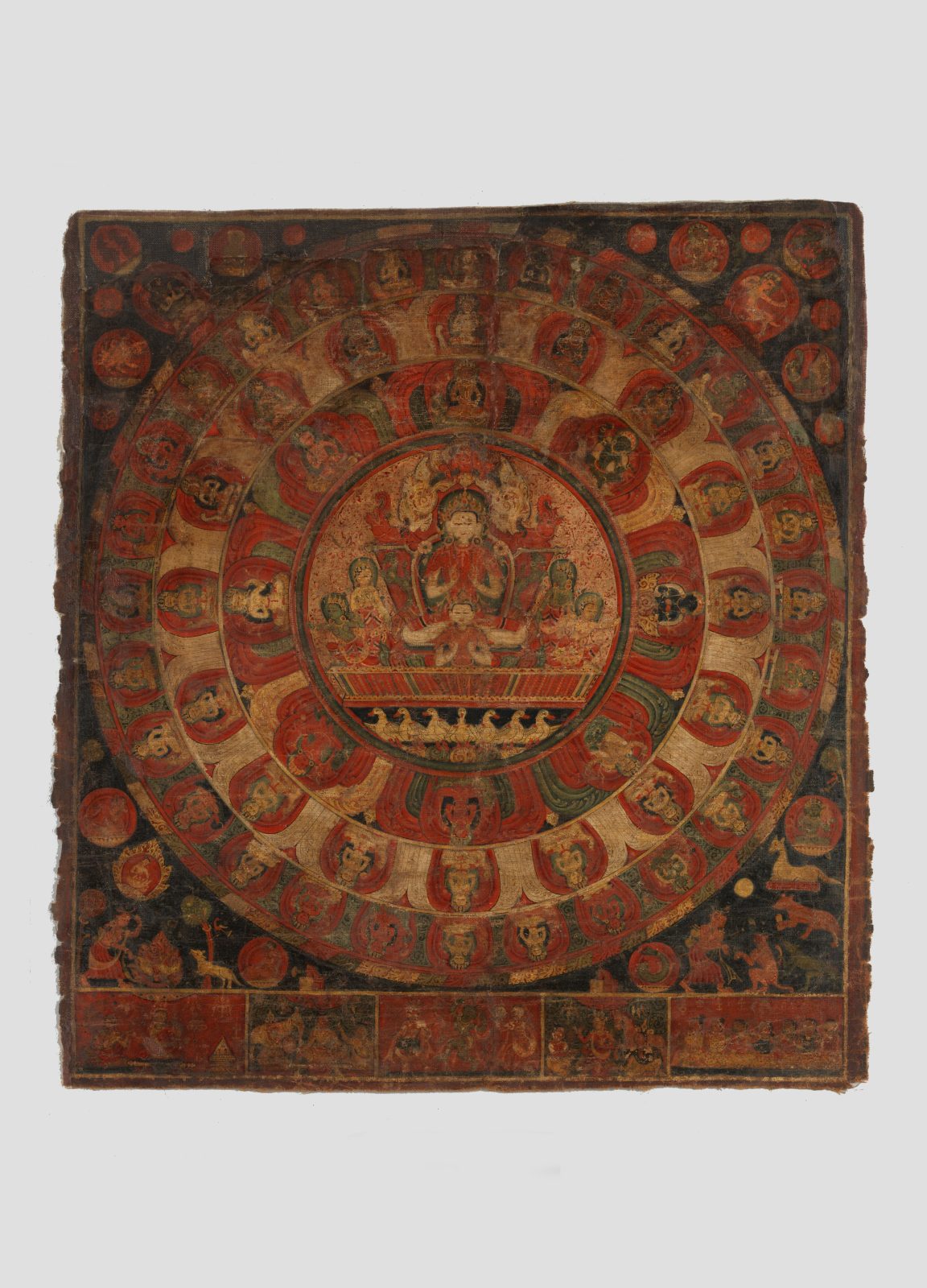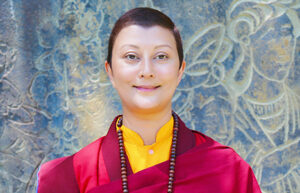

This week’s meditation session is led by Lama Aria Drolma and the theme is Mandala. The guided meditation begins at 17:48.

Mandala of Chandra; Nepal; ca.1500; Pigments on cloth; Rubin Museum of Himalayan Art, Gift of Shelley and Donald Rubin; C2010.23
This mandala is centered on Chandra, the white moon god, who holds the stalks of two white lotuses. He is flanked by his two consorts, and the charioteer Ambara sits directly in front of him controlling the seven white ganders pulling his chariot. The inner circle also houses depictions of the eight planets. The 16 deities in the second circle all mirror Chandra in iconography and likely represent the phases of the moon. The outer circle houses a group of 28 constellations (nakshatra) that correspond to a group of goddesses. In the corners around the mandala are the signs of the zodiac and two narrative scenes in which animals seem to offer food to human figures.

Lama Aria Drolma is an ordained Buddhist teacher in the Karma Kagyu tradition of Tibetan Buddhism, who has completed over a decade of monastic study and meditation training. She is a graduate of the traditional Tibetan Buddhist retreat program spanning three years and three months, an advanced cloistered meditation training program at Palpung Thubten Choling Monastery, New York.
Lama teaches worldwide, leading retreats, workshops, and corporate meditation programs and is a popular guest speaker at universities and organizations. She emphasizes Vajrayana Buddhism and Buddhist principles, making them relevant in our everyday lives, helping us to cultivate loving kindness and compassion, and bringing about a transformation of contentment and a genuine sense of well-being.
Get the latest news and stories from the Rubin, plus occasional information on how to support our work.